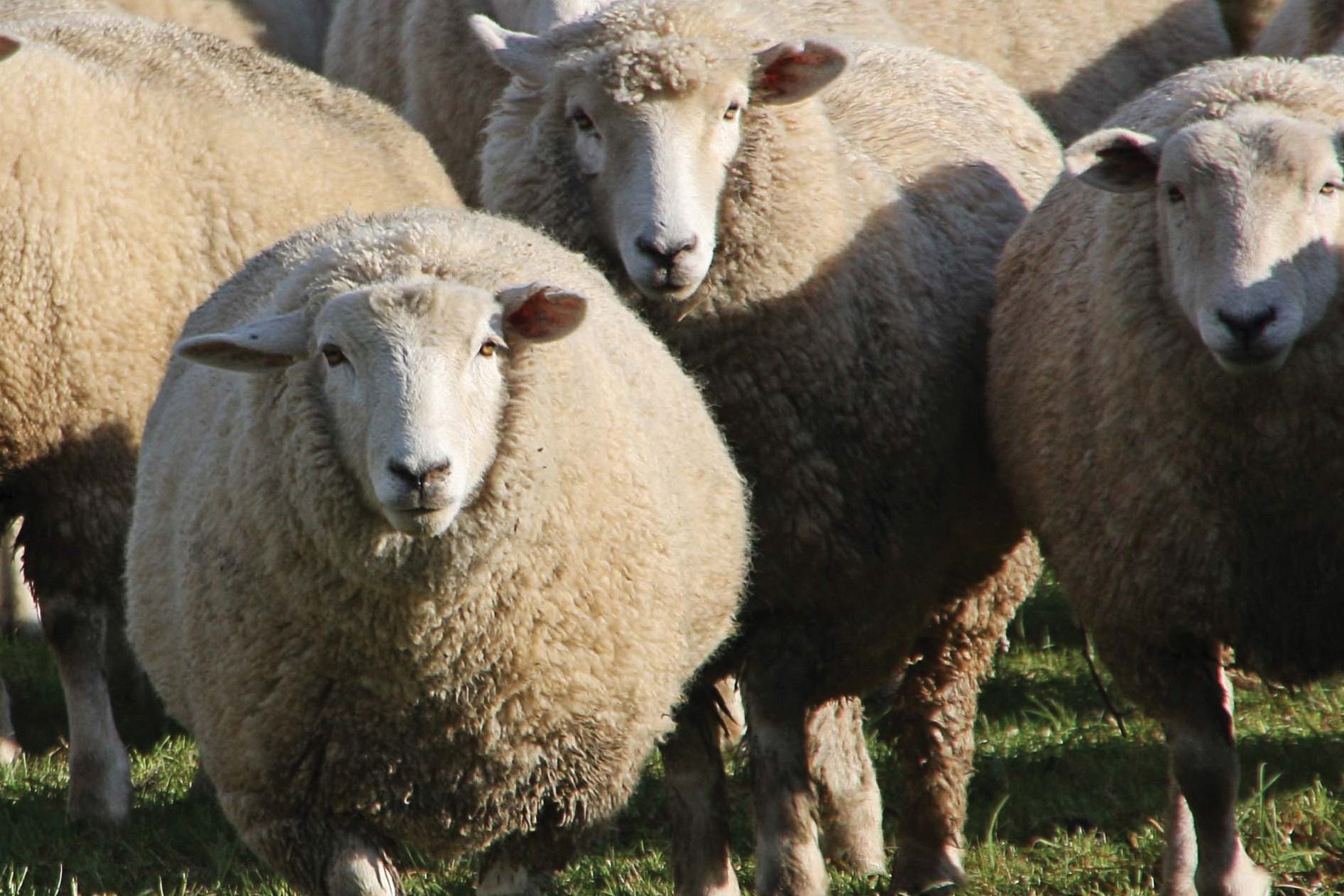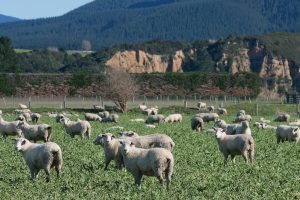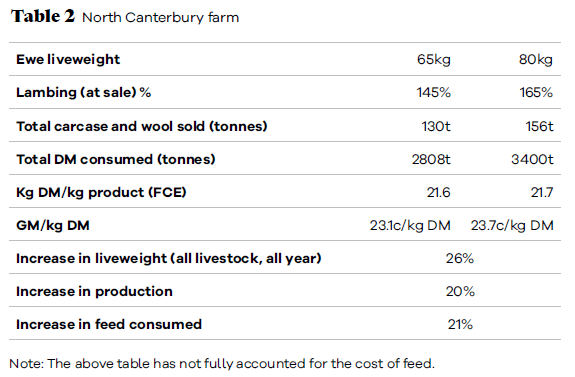Composite sheep advantage is not huge
Tom Ward looks at the advantages and disadvantages of composite sheep.

In recent years, the term composites has been used to describe a sheep containing a mix of high performance breeds, each providing a different trait. For example, Texel for muscle development, the Finn for fecundity and East Friesian for milking ability. The composite may or may not be a first cross or a stabilised breed. These are essentially bigger sheep than the standard 65kg crossbred, leading to the question of whether or not the greater productivity outweighs the greater appetite and whether or not composites are superior to other breeds of the same size.
It is difficult to gauge the interest in composites. The concept appears less popular than 15 to 20 years ago. Some large South Island farms are developing a strong composite programme. Other farmers are staying with conventional breeds and growing a 75–80kg ewe anyway. Complicating the picture is not all composites are huge sheep, and not all high-producing ewes weigh more than 65kg. Wairere Romney’s Derek Daniels said he used to sell 1000 composite rams a year, but now very few. Buyers decided the benefit was in the hybrid vigour (first cross).
Farming examples
Some South Island sheep and beef farms are changing to Headwaters sheep, a composite of Romney, Perendale, Texel and Finn as a breed. The ewes weigh 72kg, manage a 155% docking, and wean on average a 28kg liveweight (LW) lamb. Headwaters is regarded as a stabilised breed, with 15 years’ selection, so there is no hybrid vigour effect.
Management regards it as a tough sheep, not one that needs pampering.
The Headwaters business incorporates Lumina lamb, a brand which, through the genetic makeup of the Headwaters sheep, claims to improve lamb quality by putting the fat back into sheep. The meat is evidently higher in polyunsaturated fats and intramuscular fat (IMF), leading to improved tenderness and taste. To further enhance these fats, the animals are grazed on chicory for at least 30 days. The $25/head premium for lamb fitting the criterion is expected to increase to $35 and $45/head in 2024 and 2025 respectively.
Another example is a South Canterbury farm running 4600 Texel/Romney stabilised composite ewes weighing 75–80kg (empty) on hill country blocks. The ewes scan 205%, and survival to sale is 163%. Triplet rearing is assisted with two calfaterias so that every lamb gets a chance. Typically, 60–70% of the terminal lambs are sold pre-wean or off mum at 19.5–21.0kg carcaseweight (41–46.5kg LW). These are very large well-fed ewes, probably with a body condition score of 3.5+. The average daily pre-wean lamb growth rate is 450gm/day.
A North Island hill country unit runs 1500 five- and six-year-old Romney ewes, and 2000 composite (first cross) ewes with 750 dry beef cattle. The Romneys are mated with a Romney/Texel/East Friesian cross ram to produce a first-cross composite ewe. Hybrid vigour is a driver in the performance of these first-cross composite ewes. This 900ha, 8000 stock unit farm is run by one man.
A North Canterbury, dryland, drought-prone farm, runs a predominantly sheep operation wintering 3200 Romney ewes and replacements. On a stock unit wintered basis the cattle are only 17% total stock units, and all lambs are sold by Dec 25, 70% fat at an average 38kg LW. The ewes are normally lambed on 2000kg DM/ha grass covers, saved from the autumn, as most of the ewes are wintered on a crop.
An apparent aberration is an east Otago flock of 4700 Coopdales plus replacements, 60–65kg empty, scanning 175%, and achieving a 162% survival to sale. This is a 5–7% reduction in scanning compared to seven years ago, however, the very low wastage rate has been maintained. Stockmanship is excellent, albeit slipping slightly with the farm enlarged recently. The farmer attributes the results to stockmanship and buying rams that are all out of dams that have borne multiples (a twin or triplet) every year. They have also reared every lamb born every year. This 1200ha farm also has 430 bulls and is run by one man.
Table 1 (2022/23 budget) shows all farms are fairly closely aligned. The North Island hill farm is second highest, no doubt assisted by the hybrid vigour in the composites, and more than half the replacements being bought as five-year-old ewes.
With a $25/head premium the Headwaters gross margin is 26c/kg DM.
Increasing ewe size does not exponentially increase appetite, however it is still very significant. More importantly, the increased production is matched by the increased feed consumed. This is illustrated in Table 2 where Farmax models the same North Canterbury farm as in Table 1, with increased ewe size.
Science
Pre-weaning growth rates are key to profitable sheep systems as faster growing lambs can be slaughtered earlier or be heavier at slaughter. A higher growth rate in itself does not improve feed efficiency, but reduced time does because less feed is going to maintenance. Also, high growth rates transfer the feed demand from late to early summer (from post-weaning to pre-weaning), a time when there is more likely to be sufficient moisture and warmth for optimum grass growth and better quality pastures. Generally prices are higher early.
This pre-wean high growth rate effect is enhanced by high-performing ewes producing a lot of lambs very quickly, usually getting 85% in-lamb within the first 14 days of tupping. The composites, particularly with Finn and East Friesian, can produce a lot of milk, suggesting they may be better suited to rearing triplets where lambing percent is above 170%.
However, few commercial operations are doing more than 170% survival to sale. Farmers report these high milk producers have the ability to keep milking longer than traditional New Zealand sheep breeds, provided they are being fed sufficiently.
Some research suggests that above a 65kg ewe liveweight, there is a declining ovulation response to increasing ewe size, that is, the reduced stocking rate required by the bigger sheep is not compensated for by the increased productivity from that bigger ewe.
Feed quality is of paramount importance with respect to both energy (megajoules of metabolisable energy) and protein. With the number of triplets increasing rapidly with scanning above 170%, room inside the womb and rumen is limited. Feed throughput is very important.
Feed conversion efficiency (FCE) is the real elephant in the room. It is related to lambing percent and lamb growth rates. Coming off a low (not acceptable today) 110% lambing, a 10% increase in lambing increases the FCE by 20%. Further 10% increases in lambing percent initially improve the FCE by 3.5%, however the FCE improvement reduces to minimal levels by 170%. This occurs because the ewe costs are spread across more lambs. However, at higher lambing percentages the FCE declines as more multiples cause higher lamb deaths, smaller lambs and lower lamb growth rates.
Summary
My study is not exhaustive so I have not reached a comprehensive conclusion about Composite sheep, however I do not see a significant production advantage. Some farmers are achieving very good performances with composites, while others achieve without. Some ewes are large, others not. All the farmers spoken to were good managers.
The Headwaters $25/head premium over schedule apparently pushes that GM to 10% better than the next best. It will help the profitability of the Alliance Co-op lamb job that Headwaters supplied 100,000 lambs in 2022, and is looking to add that number year on year.
Whether the IMF is as good as claimed is a moot point. Well-bred lamb has good fat levels and taste, and there is insufficient time at the age lambs are killed for sufficient IMF to accumulate to affect taste. Other meat processors reward their preferred lamb suppliers differently. The Lincoln University geneticist I spoke to suggests the limited research shows NZ lamb has an IMF of about 2.5%, a little less than the Headwaters product.
I have some concern over the low use of feed under very high ewe and lamb performance. This unused feed can be tidied up with the mower (and balage), or with cattle or dry ewes later. However, the residual feed will be lower quality and the alternative enterprise lower value. A standard hill country scenario you may say. Accepting lower ewe flock performance would increase utilisation by the ewe flock, possibly earning as much for each kilogram of dry matter grown as the high-performance option.
There is another twist to this story. Limiting the ewe flock size in favour of more cattle reduces the costs of farming, as both the North Island hill and east Otago farms show. Higher sheep numbers might require an extra shepherd, which would cost $70,000, plus higher animal health and shearing costs.
Tom Ward is a farm consultant based in Ashburton.




